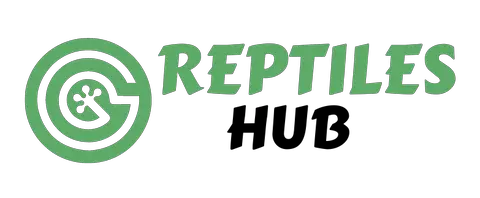Minnesota has a diverse range of turtle species, including turtles, tortoises, and terrapins, which are protected under state laws. It is essential for turtle owners and enthusiasts to understand these laws to ensure the safety and well-being of these animals.
Under Minnesota state law, there are certain restrictions on possessing turtles. The state’s Endangered Species law classifies the Blanding’s Turtle and the Wood Turtle as threatened species. Taking, purchasing, importing, or exporting these turtles is prohibited under the law. Additionally, anyone possessing or selling turtles or turtle eggs must comply with other state and federal laws that regulate these activities.
Turtle Ownership Laws in Minnesota

If you’re considering owning a turtle in Minnesota, it’s essential to understand the laws and regulations surrounding turtle ownership. While it is legal to own the most common species of turtles in Minnesota, some species are protected by law and cannot be owned as pets.
According to Minnesota law, owning any endangered species of turtles is illegal. The Blanding’s Turtle and the Wood Turtle are both classified as threatened species, and taking or possessing them without a permit from the Minnesota Department of Natural Resources (DNR) is illegal.
If you plan to own a turtle in Minnesota, it’s important to note that you must have a recreational turtle license to take or possess a turtle. The following turtle species may be taken with a recreational license: Western Painted Turtle, Snapping Turtle, and Spiny Softshell.
It is also essential to comply with other state and federal laws regulating the taking, possessing, and selling of turtles and turtle eggs. If you plan to sell turtles or turtle eggs, you must have a turtle seller’s license or an apprentice license.
When taking turtles, you must use specific gear authorized by the commissioner, including floating or submerged turtle traps, hooks, and other commercial fishing gear. Traps must not exceed five feet in width, four feet in height, and eight feet in length.
It’s important to note that there are possession limits and size limits for turtles in Minnesota. You may not possess more than four wild turtles or turtle eggs, and you may not take turtles during their nesting season.
If you plan to propagate turtles, you must have a private fish hatchery or aquatic farm license. You may only propagate native turtles in Minnesota and must comply with the updated regulations regarding turtle propagation.
Turtle Commercialization Laws in Minnesota
In Minnesota, it is illegal to commercialize certain turtle species. Specifically, it is illegal to sell or commercialize in any way any of the seven sea turtle species: Loggerhead turtles, Green sea turtles, Leatherback turtles, Hawksbill turtles, Kemp’s ridley turtles, Olive ridley turtles, and Flatback turtles. Additionally, it is illegal to commercialize Blanding’s turtle and Wood turtle.
Commercial collection of wild turtles in Minnesota is also banned. For-profit trappers can no longer collect thousands of turtles from the state’s waterways, mainly to sell for food, traditional Asian medicines, or pets. This ban ensures tens of thousands of Minnesota’s turtles are safe.
To sell turtles in Minnesota, you need to obtain a turtle seller’s license. This license is required for anyone who sells turtles or turtle eggs, buys turtles for resale, or engages in commercial turtle farming.
Furthermore, if you want to propagate turtles, you must obtain a turtle propagation license. This license is required for anyone who wants to take live turtles or turtle eggs from the wild or a licensed aquatic farm for propagation.
Commercial equipment used in turtle harvesting should also comply with Minnesota’s turtle regulations. For example, commercial fishing gear used to harvest turtles must have a minimum mesh size of 4 inches.
The 4 Inches Law
In 1975, the US government passed regulations of protecting sea turtle eggs, reduce environmental damage, and reduce health risks. This law makes it illegal to sell turtles that are smaller than 4 inches. The 4 inches law applies to all turtles, including red-eared sliders, painted turtles, and snapping turtles.
The reason for this law is to prevent the spread of salmonella. Turtles smaller than 4 inches are more likely to carry salmonella, which can cause severe illness in humans. Children are especially vulnerable to salmonella because they are more likely to handle turtles and put their hands in their mouths.
It is important to note that the 4 inches law only applies to selling turtles. Owning a turtle smaller than 4 inches in Minnesota is legal, but it is not recommended. If you choose to own a small turtle, it is crucial to wash your hands thoroughly after handling it and keep it away from young children.
In summary, the 4 inches law is in place to protect both turtles and humans from the spread of salmonella. It is illegal to sell turtles smaller than 4 inches, but it is legal to own them. However, it is not recommended to own a small turtle due to the increased risk of salmonella.
Laws About Wild Turtles in Minnesota
In Minnesota, there are specific laws and regulations in place to protect wild turtles. It is essential to understand these laws if you plan on removing turtles from the wild or keeping them as pets.
Under Minnesota state law, it is illegal to remove any wild turtle species from their natural habitat except for the following species:
- Western Painted turtle
- Snapping turtle
- Spiny Softshell turtle
However, it is essential to note that snapping turtles can only be removed if their shell is more significant than 10 inches. If you plan on removing any of these species from the wild, you must have the appropriate license or permit.
Additionally, possessing, renting, or selling more than 25 turtles for use in a nonprofit turtle race is illegal unless they are threatened or endangered species.
It is also essential to be aware of changes to turtle harvest regulations. As of 2022, anyone hoping to harvest wild turtles in Minnesota must have a valid fishing license and adhere to updated regulations.
Native Species
Minnesota is home to eleven species of native turtles, all protected by state law. These species are:
- Blanding’s Turtle
- Wood Turtle
- Western Painted Turtle
- Common Snapping Turtle
- Smooth Softshell Turtle
- Spiny Softshell Turtle
- Midland Painted Turtle
- Northern Map Turtle
- False Map Turtle
- Eastern Box Turtle
- Gray Treefrog
It is illegal to take, possess, transport, or sell any of these species without the Minnesota Department of Natural Resources (DNR) permit. It is also illegal to disturb their nests or eggs.
Some species, such as the Blanding’s Turtle and the Wood Turtle, are considered endangered or threatened in Minnesota. These turtles are particularly vulnerable to habitat loss, fragmentation, and road mortality.
The Minnesota DNR recommends that if you encounter a native turtle, you observe it from a distance and avoid disturbing it. If you need to move a turtle to help it cross a road, you should move it in the direction it was headed and only as far as necessary.
Laws About Sea Turtles
Sea turtles are protected under federal law in the United States, and Minnesota is no exception. The 4 Inches Law, passed in 1975, makes it illegal to sell turtles smaller than 4 inches. This regulation was created to protect sea turtle eggs, reduce environmental damage, and reduce health risks. Violators of this law can face hefty fines and even imprisonment.
Additionally, sea turtles are listed as endangered species under the Endangered Species Act (ESA). This means that it is illegal to harass, harm, capture, or kill sea turtles. Importing, exporting, or selling any sea turtle or its parts is also illegal.
If you encounter a sea turtle in distress, it is essential to contact the appropriate authorities. In Minnesota, you can contact the Minnesota Department of Natural Resources or the National Oceanic and Atmospheric Administration (NOAA) Fisheries Service.
Why Those Laws Exist
Turtle laws exist for several reasons, including protecting endangered or vulnerable species, preventing the spread of diseases, and reducing environmental damage. Here are some of the main reasons why turtle laws exist:
Protect Endangered or Vulnerable Species
There are over 300 turtle species in the wild, and some are at risk of extinction due to illegal harvesting, environmental degradation, water pollution, and destruction of nesting grounds, among other reasons. Turtle laws aim to protect these species by regulating their trade and sale, prohibiting the collection of certain species, and enforcing penalties for violating these regulations.
Prevent the Spread of Diseases
Turtles can carry salmonella bacteria, which can cause serious illness in humans. Turtle laws help prevent the spread of salmonella by regulating the sale and distribution of turtles, requiring sellers to provide information about the risks of salmonella, and encouraging proper hygiene practices when handling turtles.
Reduce Environmental Damage
Turtles play an essential role in maintaining healthy ecosystems, and their removal from the wild can negatively affect the environment. Turtle laws aim to reduce environmental damage by regulating the collection and trade of turtles, prohibiting the sale of turtles that are smaller than a specific size, and requiring permits for the collection of certain species.
Conclusion
In conclusion, Minnesota has laws in place to protect its turtle populations. Possessing turtles in the state requires adhering to certain restrictions under Minnesota state law (MS97A.015). The state’s Endangered Species law (MS84.0895) classifies the Blanding’s Turtle and the Wood Turtle as threatened species, and taking, purchasing, importing, or exporting them is prohibited.
It is important to note that different states have different turtle populations, and most states have laws focusing on native turtle populations. These laws may not cover non-native populations.
If you hope to harvest wild turtles in Minnesota, you will need a valid fishing license and must adhere to updated regulations. Residents with an angling license can take snapping and western-painted turtles in Minnesota.
A recreational turtle license, a turtle seller’s license, or a turtle seller’s apprentice license is required to use floating or submerged traps, turtle hooks, and other commercial fishing gear. Except for renewals, no turtle seller’s licenses will be issued.
Resources
If you are interested in learning more about Minnesota turtle laws, several resources are available to you. Here are a few options:
- Minnesota Department of Natural Resources (DNR): The DNR is the state agency responsible for managing natural resources in Minnesota. They have a webpage dedicated to turtles, which includes information on turtle identification, conservation efforts, and regulations. You can also contact the DNR directly with any questions you may have.
- Minnesota Herpetological Society: This society is focused on the study and conservation of reptiles and amphibians in Minnesota. They offer educational programs, field trips, and resources for those interested in learning about turtles and other herpetofauna.
It is important to note that while these resources can be helpful, they may not provide all the information you need. It is always best to consult the actual laws and regulations themselves, or to contact a legal professional for advice.




Leave a Reply